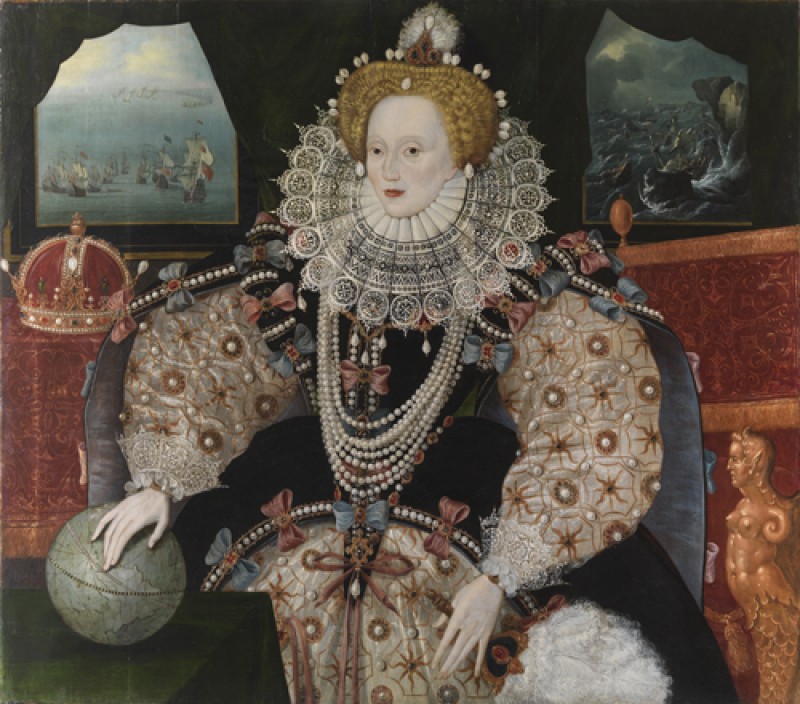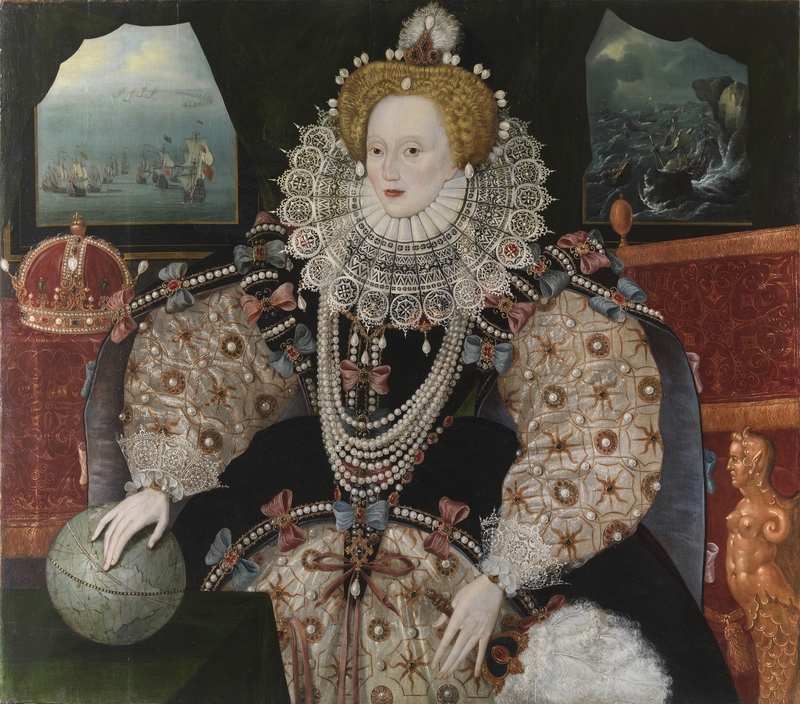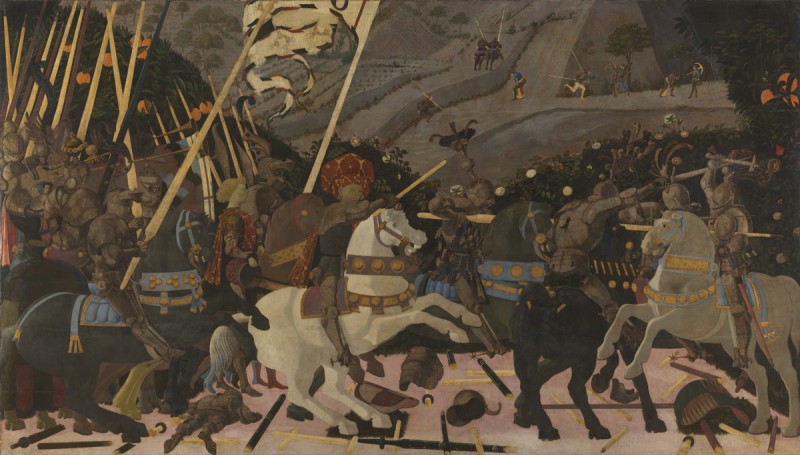'The Adoration of the Kings' by Jan Gossaert
This audio clip describes the painting The Adoration of the Kings by Jan Gossaert (c.1478–1532).
It has been created for use as part of our primary school resource, The Superpower of Looking, in order to support pupils with blindness or visual impairment to take part in the lessons.
Explore the painting further in our resource The three wise men who visited Jesus.
Full audio description text
This is a description of a large painting called The Adoration of the Kings. It was painted over five hundred years ago, in the early sixteenth century, by a male artist called Jan Gossaert.
The painting shows a scene from the bible, a story that you might know if you are familiar with the nativity play at Christmas. It shows three kings who have come to worship and bring gifts to the newborn baby Jesus, who sits on his mother Mary's knee. In the story, they are known as the 'wise' Kings.
The artist has used colourful oil paints on a big piece of oak board. It is nearly two metres square, which is taller than the average adult. The painting was intended to be an altarpiece in an Abbey. There is a lot happening in this picture, a large number of people, angels and animals have gathered to celebrate the birth. The artist has painted the scene in breathtaking detail, attending carefully to the different textures of people's clothes and the diversity of their faces – young, old, rich, poor and from different parts of the world.
The story usually takes place in a stable but Gossaert has done something different, setting the scene in the ruins of a palace. This grand building with tall archways and decorative columns has fallen into disrepair. Some of the red and grey brick walls have gone, leaving the building open to the weather. Through an arched opening in the back wall, other parts of the building are shown including a crumbling bell tower. Spindly trees and plants have started to reclaim the space, growing up the sides of walls. Smaller, leafy plants have pushed up through the pale, tiled floor, dislodging some flagstones which lie cracked and broken. Parts of the roof are missing which reveals the rich blue night sky, and a special bright star at the top of the picture. In the story, this star has guided the three kings to the baby's birthplace. The star has a yellow centre and shimmering halo, brightening the clouds with radiating streaks of light.
Placed in the centre of the painting is Mary, who is enveloped in a blue robe with a lace collar. The robe is very long and is draped on the flagstones around her feet. She sits gazing down at the naked baby Jesus on her lap, her right hand supporting him. The artist has painted Mary as a young, white woman with a pleasant, rounded face and long auburn curls that are kept off her face by a lace cap. Jesus is a lean, blue-eyed baby boy, with dark blonde curls. Behind them, Mary's husband Joseph, a grey-bearded man dressed in plain red robes, is watching attentively from a doorway on the left. Mary is holding a carved golden cup full of gold coins. This is a gift from King Caspar, who is kneeling close to Mary with his hands clasped in prayer, to the right of the painting. Jesus has plucked out a coin and holds it up.
The three kings have arrived with a huge number of attendants. People crowd into the space behind them, on both sides and in the distance, a procession of people are still approaching over a green hill, some on horseback. The Kings are dressed in lavish clothes but the artist works hard to show us that they are still ordinary people.
King Caspar is dressed in expensive red brocade, lined with dark, strokable-looking fur. But he has uncovered his tight grey curls, laying his fancy red velvet hat on the flagstones, next to the lid of the golden cup, and his golden staff of office. The artist has shown Casper with a large, hairy blemish on one cheek.
Behind him stands King Melchior, who is holding his gift in one outstretched hand. The offering is inside a tall golden casket, a special box shaped like a castle. Melchior wears a green tunic, red tights and black shoes under a long brown robe with white fur trim. He has shoulder-length dark hair and beard and wears a tall velvet cap with a peaked front.
On the left of the painting, to the other side of Mary and Jesus, stands King Balthasar holding his gift in another elaborately carved casket. He is a bearded, Black man wearing a heavily decorated headpiece with crown and pearl detailing. A golden-haired attendant is carrying the train of his pink velvet coat. Soft leather is expensive and Balthasar's boots must be costly because the leather is so fine that the imprint of his toes shows through.
The artist Jan Gossaert must have been very proud of his painting as he signed it twice – once on Balthasar's headpiece and also on the silver collar of an attendant in a turban behind him.
Among the other people who have gathered are some shepherds who wear rough tunics. Their flocks graze around a grand building in the distance. Some animals are much nearer: a grey donkey stands at the back and, peering around a corner, there is a brown cow with curvy horns. In the sky, just below the star, flies a white bird. In the foreground, at the bottom of the painting, there are two dogs. The small one on the left has scruffy brown and white fur and is busy with a bone. On the right, a grey, smooth-haired dog with long ears sits watching.
Above everyone's heads, the angels are arriving to celebrate. They are human-shaped but hover in the air with multi-coloured wings. On the left, two angels with blonde curls, wearing long robes that cover their feet, fly close to Mary and Jesus. One has a robe of pale fabric, while the other is in a long green robe and carries a paper scroll. In the top right of the picture is a third angel with silvery wings, blond curls and a long pink robe. Just behind, two other angels are waiting, and in the distance, four more are flying in to complete the heavenly scene.




